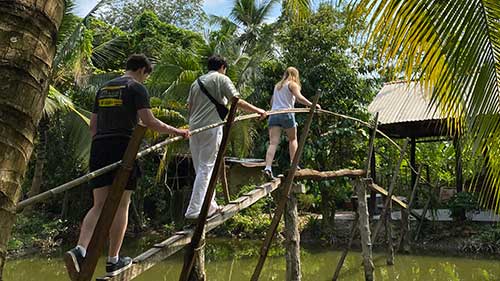Environmental Science and Policy (ENSP) is a multidisciplinary program that produces problem solvers and leaders who are prepared to face today’s environmental challenges. ENSP is a unique undergraduate major co-sponsored by four colleges. Students acquire a foundational understanding in science and policy through core classes, and then advance to specialized training and experiences in one of many academic disciplines ranging from biology to geology, and anthropology to government and politics.
Degrees Offered: Bachelor of Science in Environmental Science and Policy
Environmental Science and Policy Information
Programs of Study
All ENSP students begin as "undeclared" in ENSP (AGNR), where they will complete approximately 2-3 semesters of lower-level "core" courses before declaring a specialization.
AGNR Specializations
Environment and Agriculture

Both locally and internationally, there is increasing concern about how humans manage soils, use water, raise animals, and modify the genetic base of crops. This concentration prepares students to work in agroecology, agricultural land management and conservation, sustainable agriculture, integrated pest management, and production science.
Environment and Agriculture
Environmental Economics

Economics is the study of the allocation of scarce resources. Economists study how incentives affect people's behavior. Environmental and natural resource economics is the application of the principles of economics to the study of how environmental and natural resources are developed and managed.
Environmental Economics
Soil, Water, and Land Resources

Soil forms an essential part of the environment, affecting or controlling most living things. Soil science draws from geology, geography and a variety of other natural and life sciences, focuses land use management at the watershed scale and provides an integrated knowledge of soil and water dynamics to control problems like non-point source pollution, wetland delineation, and land classification.
Soil, Water, and Land Resources
Wildlife Ecology and Management

Today, the study of wildlife ecology is a rigorous science that spans biological scales from the genome to the biosphere. Methods include inventory techniques for population size and condition, physiological function, migratory patterns, habitat evaluation, and food web studies. Management of wildlife is especially challenging because it requires the very best ecological science as a foundation, in addition to a strong perspective in social science.
Wildlife Ecology and Management
Other ENSP Specializations
Additional Resources
Considering ENSP for a degree? Discover more information on coursework, research, and careers.







